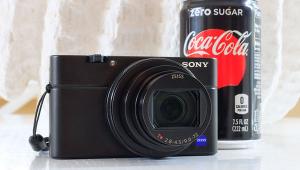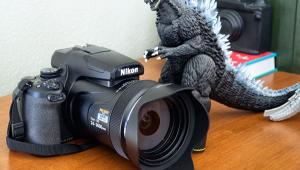To be sure in what he or she did as long as that makes him or her content. Best for him. Few everyone is able to recognize their personalities. Karen Millen Ireland
Canon PowerShot G12; The “G” Series, Amended Page 2
The top dial controls, where you set exposure compensation, ISO and choose various shooting modes, are one of the true charms of the camera. The upper back of the camera has an exposure lock button, which you can use to work with the essentially live preview of the image on the monitor, and which you can use to lock exposure separately from focus point, something which in some older (and even current) D-SLRs required extensive gymnastics, if it’s available at all. This is a very good feature for fine exposure control, especially when combined with spot metering in Manual mode.
|
HDR
|
|
 |
|
|
The front control dial is invaluable when shooting in Aperture- or Shutter-Priority mode as you don’t have to take your hand away from what is a natural shooting posture to change settings. It also allows you to sift through various other shooting options with ease. This is a real improvement. On the mode dial are the choices for “movies,” Manual mode, a settings “bank,” and Scene modes. While I did a fair share of shots with the camera in the various Auto and P modes, I spent perhaps an inordinate amount of time with the Scene and Manual options.
One of the reasons the G line of cameras has been so successful, aside from excellent image quality, of course, is that they allow you to become quite engaged in the process of making an image. Many other integral lens cameras encourage shooting in Program, despite their various other options, simply because the use of truly “photographic” options can be cumbersome. While you do not have a read-out in the eyepiece finder in the G12, which is cramped anyway, the dials and their arrangement do foster easy access to aperture, shutter speed, and other controls.
In the G12, as with others, the changes you make in settings play out in real time on the monitor as you work, although this requires you to gain experience in gauging just how close the monitor is to what gets written to the card. Like testing film, you should work exposure compensation with various screen brightness settings in various types of light to get a real feel for a WYSIWYG experience, from monitor view to recorded image. That to me is a key element in working with this camera that will help you get the most from it.
|
Macro Mode
|
|
 |
|
|
One thing to realize is that the monitor will automatically respond to light levels and changes brightness to enhance the view. You have to take this into account and get a feel for the light levels to avoid underexposure in some cases. You can look at histograms on one DISP option, as well as blinkies, but given that you cannot see the image “full size” on the screen with that display mode, and that doing an analysis of each image as you work in changing light is not the best way to get great shots, I suggest getting a good feel for the monitor view/results beforehand. This advice, by the way, can be applied to all Live View-type cameras.
In any case, Manual Exposure mode, with the front dial handling the shutter speed and the back dial the aperture, with using exposure lock on the back to nail the highlights with one of three metering patterns, and with light pressure on the shutter release to lock focus, make this camera a delight for photographers. It’s not required to work this way, of course, just a suggestion for putting some photography back into taking pictures.
Like the G11, the camera comes with a 5x optical zoom from about 28mm to 140mm equivalent (plus some “digital zoom” space that to me should not be used unless Martians land in a field far away) and a very close-focusing Macro mode. Straight up the lens is sharp and easy to zoom and has an image stabilization system that you can turn on and off, depending on whether you use the camera on a tripod or not. I actually shot a lot of my tests on a Gitzo carbon fiber, and although the ball head was almost as big as the camera, I liked doing so because I could make full use of the articulating monitor for composition without feeling that I was adding to the shake that might come with the odd viewing angles I sometimes chose.
Like many digital cameras these days the optics are being shaped more and more by software, and in the G12 kit are a few wrinkles like Miniature mode and Fisheye effect that are supplied entirely by image processing rather than by glass. Miniature mode is like a single function Lensbaby, although you can move the focus plane around the picture using the control dial. Fisheye was quite fun to work with and while clearly a trick did encourage some interesting points of view. I also did some very close shooting and noted that Canon touts a “hybrid” stabilization system made especially for close-up work, which adjusts for angular motion as well as the usual shake suppression, which worked quite well, although I still think that a tripod and macro shooting are a match made in heaven.
|
Dynamic Range Correction
|
|
 |
|
 |
|
|
The G12 has some other tricks up its sleeve, such as an in-camera bracketing, which takes three shots with one shutter release and that can be modified by working with exposure compensation up and down the scale. You must do this on a tripod because the shot sequence is relatively slow and cannot be handheld, even at a fast shutter speed. So, the bracket here is tripod-only for post-HDR, but handheld for just making exposure variations when framing accuracy of each shot is less critical.
There are HDR and DR (Dynamic Range) functions, the former being three shots combined to one in camera (tripod and JPEG only) and the latter being a tonal curve compensation available in two degrees of strength, with the highest strength being, to me, a bit surreal. The HDR does work fine, though it requires that you pay close attention to how you meter the shot in the first place, and you can play some games by setting exposure compensation to start. The built-in ND filter is great for slow-motion effects in fairly bright light, given that you shoot at the lowest ISO and use a tripod as well.
In the “movie” modes you can choose between standard and HD, the latter being the highest resolution. Both seemed fine to me when played back on my MacBook Pro; there is an HDMI connector for playback on a widescreen TV.
 |
|
|
In all, the G12 is a fine follow-up in the G-Series line, one that adds incremental features that keep the camera competitive but doesn’t offer substantial change from the G11. Overall, my feelings remain the same as they were for the G11, that in its class of integral lens cameras, and given the smaller chip size, it remains one of the top choices as a photographer’s second camera.
For more information, contact Canon U.S.A., Inc. at: www.usa.canon.com.
- Log in or register to post comments


















































